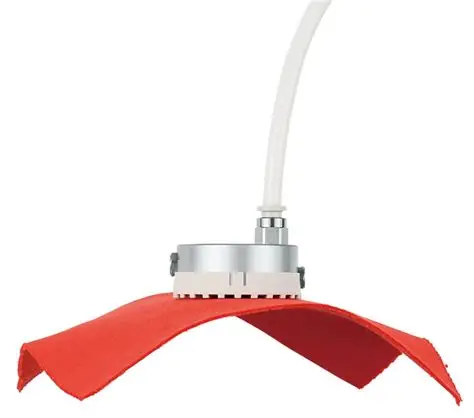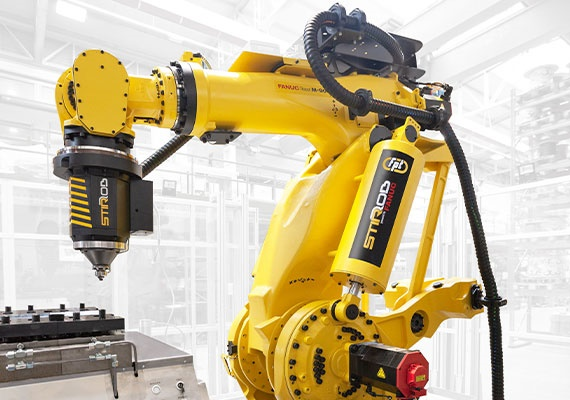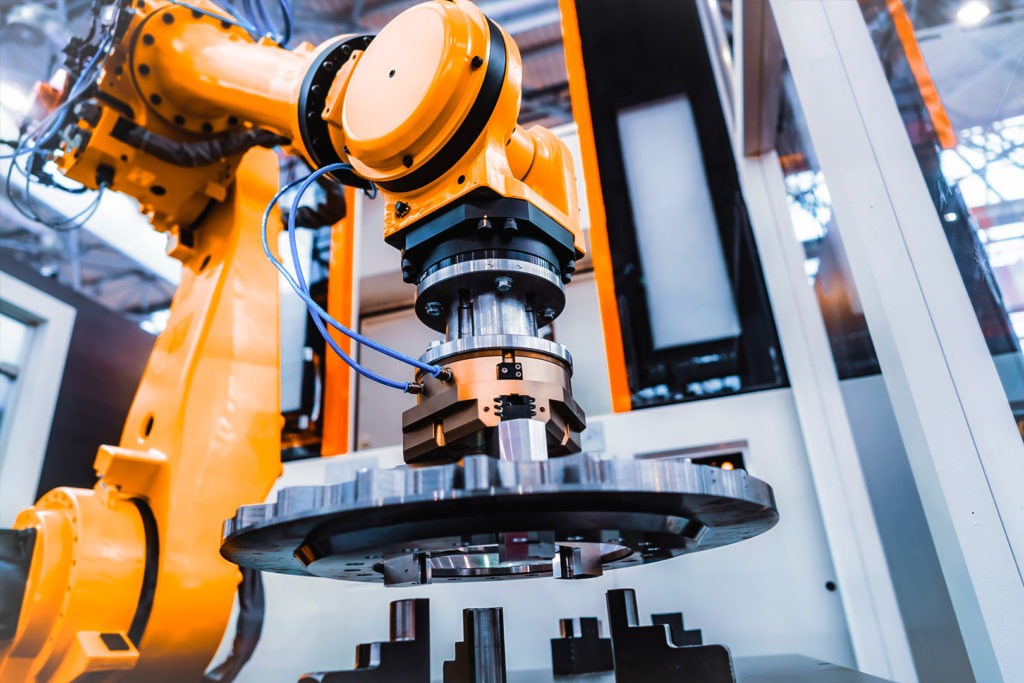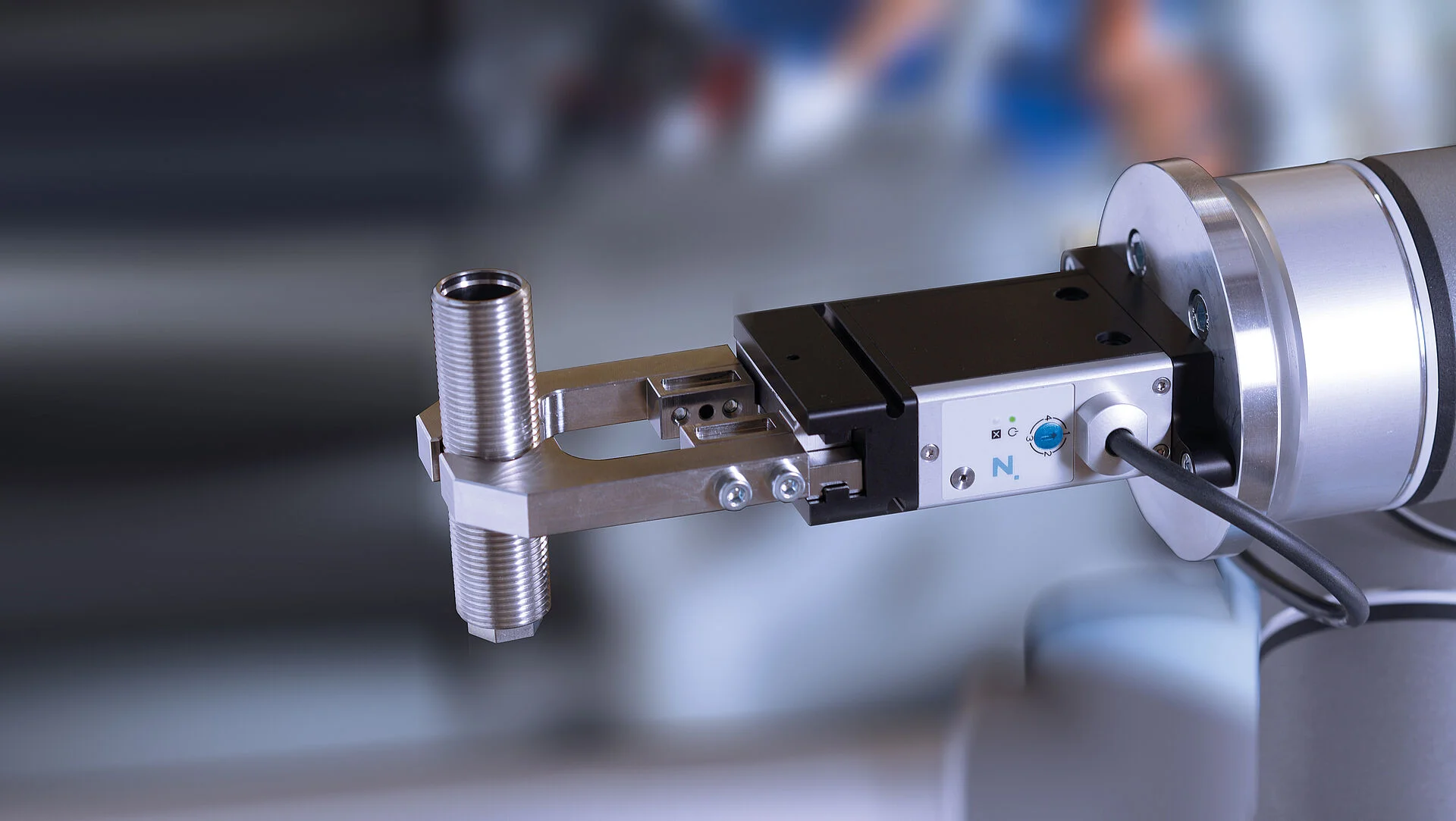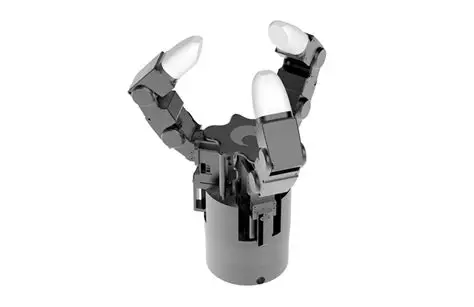Medical Grade Stainless Steel Machining: Precision CNC Solutions for Healthcare Applications
Introduction: The Critical Role of Precision Machining in Healthcare Manufacturing
Medical grade stainless steel represents a specialized category of materials engineered to meet the stringent requirements of healthcare applications. These materials must demonstrate exceptional biocompatibility, corrosion resistance, and mechanical integrity to ensure patient safety and device reliability. CNC machining of medical grade stainless steel requires specialized expertise, as the components produced often serve in life-critical applications where precision is non-negotiable.
The healthcare industry depends on machined stainless steel components for a wide range of devices, from surgical instruments and implants to diagnostic equipment and drug delivery systems. Each application demands uncompromising quality standards and strict adherence to regulatory requirements. This comprehensive guide explores the technical complexities, specialized processes, and practical applications of medical grade stainless steel machining, providing valuable insights for manufacturers, engineers, and healthcare professionals seeking to understand this critical manufacturing discipline.
At our CNC machining facility, we’ve refined our medical stainless steel processes through years of dedicated experience, combining state-of-the-art equipment with deep materials knowledge to deliver components that consistently exceed industry standards. Our comprehensive approach addresses every aspect of the manufacturing process, from material selection and machining parameters to surface finishing and sterilization compatibility.
Understanding Medical Grade Stainless Steel Alloys
Material Composition and Properties
Medical grade stainless steels are iron-based alloys containing chromium, nickel, molybdenum, and other elements that confer specific properties essential for healthcare applications. The most commonly used grades include:
Table 1: Comparison of Medical Grade Stainless Steel Alloys
| Alloy Grade | Composition | Key Properties | Medical Applications | Machining Considerations |
|---|---|---|---|---|
| 316L | Fe-17Cr-12Ni-2.5Mo | Excellent corrosion resistance, good formability | Surgical instruments, implantable devices, dental equipment | Work-hardens rapidly, requires sharp tools and appropriate feeds/speeds |
| 304 | Fe-18Cr-8Ni | Good corrosion resistance, high ductility | Medical hardware, non-implantable devices, equipment housings | Better machinability than 316L, but lower corrosion resistance |
| 17-4PH | Fe-15Cr-4Ni-4Cu-3Mo | Precipitation hardening, high strength | Surgical tools, orthopedic instruments, dental components | Can be machined in solution-treated condition then aged for hardness |
| 420 | Fe-13Cr-1Si-1Mn | High hardness, good wear resistance | Cutting instruments, scalpels, dental drills | Requires annealing before machining, then hardening and tempering |
| 440C | Fe-17Cr-1Mo-1C | Highest hardness, excellent wear resistance | Bearings for medical devices, surgical blades | Difficult to machine, often requires grinding operations |
These materials must meet specific ASTM standards (such as F138 for 316LVM) for medical applications, particularly for implantable devices where long-term biocompatibility is essential . The vacuum melting process used for surgical-grade stainless steels ensures minimal inclusions and consistent material properties.
Material Selection Criteria for Medical Applications
Choosing the appropriate stainless steel grade requires careful consideration of multiple factors:
-
Biocompatibility Requirements: Implantable devices necessitate ASTM F138-compliant 316LVM with controlled impurity levels
-
Sterilization Method Compatibility: Materials must withstand repeated sterilization cycles without degradation
-
Mechanical Property Requirements: Load-bearing applications demand higher strength alloys like 17-4PH
-
Corrosion Resistance: Devices exposed to bodily fluids require the superior corrosion resistance of 316L
-
Wear Resistance: Moving components benefit from the hardened surfaces of 420 or 440C grades
Advanced CNC Machining Techniques for Medical Stainless Steel
Multi-Axis Machining Capabilities
Modern medical components often feature complex geometries that require advanced machining strategies. Our 5-axis CNC machining centers provide unparalleled capabilities for producing intricate stainless steel components in a single setup. This technology enables:
-
Simultaneous multi-surface machining without repositioning, reducing cumulative errors
-
Complex contouring capabilities for anatomical shapes and organic geometries
-
High-speed machining strategies that maintain accuracy while optimizing cycle times
-
Adaptive toolpaths that optimize material removal rates while minimizing stress and distortion
The implementation of 5-axis technology has proven particularly valuable for orthopedic implants and surgical instruments with complex, ergonomic designs . This approach reduces setup times by up to 60% while improving dimensional accuracy by 30% compared to conventional 3-axis machining.
Precision Machining Parameters
Establishing optimal machining parameters requires balancing material removal rates with surface finish requirements and tool life considerations. The following table provides recommended parameters for various machining operations:
Table 2: Optimized Machining Parameters for Medical Stainless Steel
| Machining Operation | Cutting Speed (SFM) | Feed Rate (in/rev) | Depth of Cut (in) | Tool Material | Coolant Strategy |
|---|---|---|---|---|---|
| Rough Turning | 150-250 | 0.008-0.015 | 0.100-0.250 | Carbide (C2/C3 grade) | High-pressure flood coolant |
| Finish Turning | 250-400 | 0.003-0.006 | 0.005-0.020 | CBN/PCD | Minimal quantity lubrication |
| Milling | 200-350 | 0.002-0.008 per tooth | 0.050-0.150 | Carbide (submicron grain) | Through-tool coolant |
| Drilling | 100-200 | 0.002-0.006 | – | Carbide (TiAlN coated) | Peck drilling with coolant |
| Threading | 50-150 | Pitch-dependent | – | Carbide (TiN coated) | Mist coolant |
These parameters should be adjusted based on specific alloy characteristics, part geometry, and desired surface finish requirements . The relatively lower cutting speeds necessary for stainless steel compared to other materials reflect the need to manage work hardening and tool wear.
Micro-Machining Capabilities for Miniature Medical Components
The trend toward minimally invasive surgery has driven demand for increasingly smaller medical components. Our precision micro-machining capabilities address this need with these specifications:
-
Feature sizes down to 0.1mm with positional accuracy of ±0.005mm
-
Specialized micro-tooling with diameters from 0.1mm to 3.0mm
-
High-speed spindles up to 50,000 RPM for clean micro-feature generation
-
Vision-assisted positioning for accurate part alignment and inspection
Surface Finish Requirements for Medical Applications
Critical Surface Characteristics
Medical devices have exceptionally demanding surface finish requirements that directly impact functionality and biocompatibility:
-
Implant Surface Roughness: Controlled topography for optimal osseointegration (typically Ra 0.8-3.2μm)
-
Bearing Surfaces: Ultra-smooth finishes (Ra < 0.4μm) to minimize friction and wear
-
Fluid Contact Surfaces: Specific roughness profiles to prevent bacterial adhesion and facilitate cleaning
-
Cosmetic Surfaces: Aesthetic requirements for external device components
Advanced Finishing Techniques
Achieving these demanding surface characteristics requires specialized finishing processes:
-
Electropolishing: Removes a thin surface layer to improve corrosion resistance and cleanability
-
Passivation: Enhances the natural chromium oxide layer for improved corrosion resistance
-
Laser Marking: Provides permanent identification without compromising material integrity
-
Vibratory Finishing: Creates consistent edge breaks and surface profiles
Quality Assurance and Regulatory Compliance
Comprehensive Inspection Capabilities
Medical device manufacturing demands rigorous quality control systems. Our comprehensive inspection protocols ensure every stainless steel component meets exacting specifications:
-
Coordinate Measuring Machines (CMM) with 0.0003mm volumetric accuracy for complete dimensional verification
-
Optical comparators with 20x to 100x magnification capabilities for rapid 2D feature verification
-
Surface roughness testers with 0.01μm resolution to validate finish requirements
-
Custom fixtures that simulate operating conditions for functional testing
Regulatory Compliance and Documentation
Medical device manufacturers must adhere to strict regulatory requirements, including:
-
ISO 13485: Quality management system standard specific to medical devices
-
FDA 21 CFR Part 820: Quality system regulations for medical devices in the United States
-
EU MDR: European Medical Device Regulation requirements
-
Material Traceability: Complete documentation from raw material to finished component
Our quality system incorporates statistical process control (SPC) methodologies throughout the manufacturing process, including first-article inspection, in-process verification of critical dimensions, and comprehensive final inspection . This systematic approach ensures consistent quality and facilitates regulatory compliance.
Industry Applications: Case Studies in Medical Stainless Steel Machining
Case Study 1: Minimally Invasive Surgical Instruments
Challenge: A medical device company needed precision jaws for laparoscopic surgical instruments with complex internal channels for articulation and suction/irrigation capabilities. The components demanded tolerances of ±0.01mm on critical features and required exceptional surface finishes (Ra < 0.4μm) to facilitate cleaning and sterilization.
Solution: Our team implemented a multi-stage machining process utilizing Swiss-type CNC lathes with live tooling capabilities. The process incorporated:
-
Specialized tooling with optimized geometry for stainless steel machining
-
In-process gaging for critical dimensions
-
Micro-electrochemical machining for internal features
-
Electropolishing for final surface finishing
Results: The instruments achieved 100% compliance with functional testing, with the complex internal channels meeting all flow rate requirements. The optimized process reduced machining time by 20% compared to previous methods while improving quality consistency.
Case Study 2: Orthopedic Trauma Implants
Challenge: An orthopedic manufacturer required complex bone plates for trauma applications with precisely contoured anatomies and multiple screw holes with critical angular relationships. The 316LVM implants needed to maintain mechanical properties after repeated sterilization cycles and demonstrate fatigue resistance under dynamic loading conditions.
Solution: We developed a specialized machining approach incorporating:
-
5-axis simultaneous machining for complex contours
-
Finite element analysis (FEA) optimized tool paths to minimize residual stresses
-
Cryogenic machining techniques to maintain material properties
-
Validation testing including fatigue analysis and metallurgical examination
Results: The implants met all functional requirements with 99.8% reliability in accelerated life testing. The precise contouring improved surgical outcomes by reducing the need for intraoperative bending, and the components passed rigorous cleanliness testing for implantable devices.
Case Study 3: Drug Delivery System Components
Challenge: A pharmaceutical company needed intricate components for an automated drug delivery system with ultra-precise fluid pathways and mating surfaces. The 17-4PH stainless steel components required hardness >HRC 40 after heat treatment while maintaining dimensional stability with tolerances of ±0.005mm on critical features.
Solution: Our comprehensive approach included:
-
Precision machining in the solution-treated condition
-
Controlled heat treatment processes to achieve target hardness
-
Precision grinding of critical surfaces after heat treatment
-
100% inspection of all critical dimensions
Results: The components received unanimous approval for both dimensional accuracy and material properties. The project established a new benchmark for drug delivery system components, leading to ongoing partnerships for similar high-profile projects.
Design for Manufacturing: Optimizing Medical Components for CNC Machining
DFM Guidelines for Medical Stainless Steel Components
Implementing Design for Manufacturing (DFM) principles early in the design process significantly enhances producibility and reduces costs. Key considerations for medical stainless steel components include:
-
Wall Thickness: Maintain uniform wall thickness wherever possible, with minimum practical thickness of 0.5mm for standard components and 0.3mm for micro-scale features.
-
Internal Radii: Specify appropriate radii (minimum 0.5mm) on internal corners to facilitate tool access and reduce stress concentration.
-
Feature Accessibility: Design features to be accessible with standard cutting tools, avoiding deep cavities that require special tooling.
-
Tolerance Optimization: Apply tight tolerances only where functionally necessary, as excessively tight tolerances significantly increase machining time and cost.
Cost Optimization Strategies
Several strategies can optimize the manufacturing cost of precision medical components:
-
Standardize Tooling: Where possible, design features to be machined with standard tool sizes to minimize setup changes and special tooling requirements.
-
Batch Processing: Group similar components for production efficiency when volume justifies this approach.
-
Material Utilization: Optimize blank sizes and nesting to minimize material waste, particularly important with medical-grade materials.
-
Process Sequencing: Combine operations using multi-axis capabilities to reduce handling and fixturing requirements.
Technical Comparison: Stainless Steel vs. Alternative Medical Materials
Stainless Steel vs. Titanium for Medical Applications
While titanium offers advantages in specific implant applications, stainless steel provides benefits for many medical devices:
-
Cost Effectiveness: Stainless steel typically costs 30-50% less than titanium alloys
-
Machinability: Stainless steel offers better machinability than titanium, resulting in shorter cycle times
-
Availability: More readily available in various forms and sizes
-
Established History: Longer clinical history with well-understood performance characteristics
Stainless Steel vs. Engineering Plastics
For applications requiring metallic properties, stainless steel offers significant advantages over engineering plastics:
-
Sterilization Compatibility: Withstands repeated sterilization cycles without degradation
-
Mechanical Properties: Superior strength and stiffness for load-bearing applications
-
Dimensional Stability: Maintains dimensions across a wide temperature range
-
Surface Finish Capability: Can achieve superior surface finishes for sealing applications
Future Trends in Medical Stainless Steel Machining
Advanced Manufacturing Technologies
The precision machining of medical stainless steel components continues to evolve with emerging technologies:
-
AI-Driven Optimization: Machine learning algorithms that dynamically adjust machining parameters based on real-time sensor data
-
Hybrid Manufacturing: Combining additive and subtractive processes to create complex components with integrated features
-
Digital Twin Technology: Virtual modeling of the machining process to predict outcomes and optimize parameters
Sustainability Initiatives
The medical machining industry is increasingly focused on sustainable practices:
-
Material Recycling: Implementation of closed-loop recycling systems for stainless steel chips and turnings
-
Energy-Efficient Machining: Optimization of machining parameters to minimize energy consumption
-
Alternative Coolant Systems: Development of environmentally friendly coolant and lubrication systems
Conclusion: Partnering for Medical Stainless Steel Machining Success
Precision machining of medical grade stainless steel components represents a specialized segment of manufacturing that demands both technical expertise and rigorous quality systems. The unique requirements of healthcare applications necessitate uncompromising attention to detail at every stage of the manufacturing process, from material selection through final inspection and packaging.
At our manufacturing facility, we’ve combined advanced CNC technology with deep medical industry knowledge to establish ourselves as leaders in stainless steel component machining for healthcare applications. Our comprehensive approach addresses every aspect of the manufacturing process, with particular emphasis on regulatory compliance, documentation, and traceability.
The case studies presented demonstrate our capability to solve complex manufacturing challenges while maintaining the highest quality standards across diverse medical applications. As medical technology continues to evolve toward minimally invasive approaches and personalized solutions, we remain committed to investing in advanced equipment and methodologies that enhance our medical machining capabilities.
For your next medical component project, partner with a manufacturer that understands both the technical complexities and regulatory considerations of healthcare applications. Contact us today to discuss how our medical grade stainless steel machining capabilities can address your specific application requirements.


